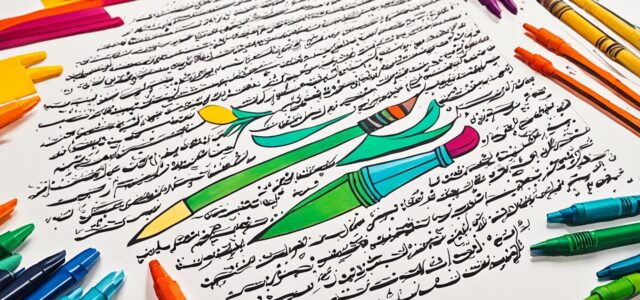Views: 68
Urdu Poets’ Role in Shaping Urdu Poetry History
Exploring Urdu poetry History reveals the deep impact of Urdu poets on this tradition. Their words, filled with emotion and social awareness, have shaped Urdu poetry history. They have touched the hearts of many generations.
Urdu poets have always pushed poetic boundaries. They explored love, spirituality, and the fight for freedom. Their poems are the heartbeat of their nation, showing its cultural soul.
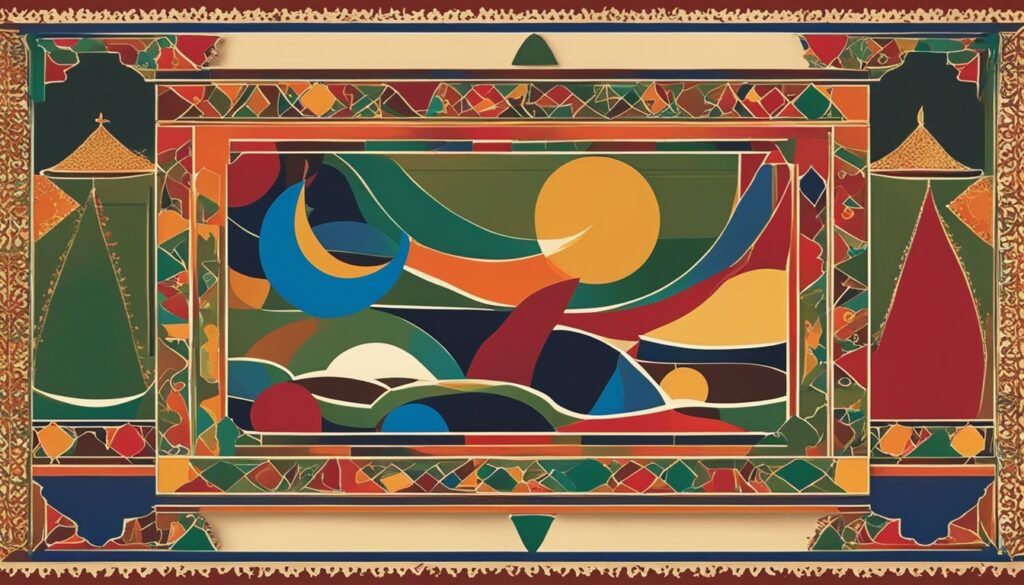
We’re going to look at how Urdu poetry has changed over time. We’ll see the stories of these amazing poets and their lasting impact. Come with me as we explore Urdu poetry’s power and beauty.
Key Takeaways
- Urdu poets have played a key role in shaping Urdu poetry history.
- Urdu poetry has grown from classical ghazals to revolutionary verses.
- These poets have tackled many themes, like love, mysticism, and fighting for freedom.
- The mushaira culture and various poetic forms add to Urdu poetry’s richness.
- Urdu poets’ legacy continues to inspire readers and writers today.
The Birth of Classical Urdu Poetry
Urdu poetry has a rich history, tracing back to Persian poetic traditions. The Mughal Empire’s rise led to Urdu literature’s growth. It blended Persian verse’s beauty with Indian elements.
The Influence of Persian Traditions
Classical Urdu poets took a lot from Persia’s literary works. They loved the ghazal‘s lyrical form, its deep metaphors, and themes of love and mysticism. This mix created a unique voice that spread widely.
The Rise of the Mughal Empire
The 16th century saw the Mughal Empire’s rise, perfect for Urdu poetry’s growth. The Mughals supported Urdu poets, leaving us with timeless works. These court poets shaped classical Urdu poetry.
The mix of Persian traditions and Urdu literature during the Mughal Empire era shaped Urdu’s poetic tradition. This era’s impact is still seen in the works of Urdu’s top poets.
“The Mughal era was a golden age for Urdu poetry, where poets seamlessly wove together the elegance of Persian verse and the vibrant voices of the Indian subcontinent.”
The Golden Age of Urdu Ghazals
Urdu poetry History shone brightly during the golden age of ghazal poetry. Famous poets emerged, captivating people with their deep thoughts on themes of love and mysticism.
Masters of the Ghazal Form
Poets like Mirza Ghalib, Mir Taqi Mir, and Faiz Ahmed Faiz led this era. They made Urdu poetry soar with their ghazal skills. Their poems touched on deep human feelings and big ideas.
Themes of Love and Mysticism
The ghazals of this time were full of themes of love and mysticism. Poets like Ghalib and Mir Taqi Mir mixed the real and the spiritual in their verses. They took readers on a trip of self-discovery and spiritual growth.
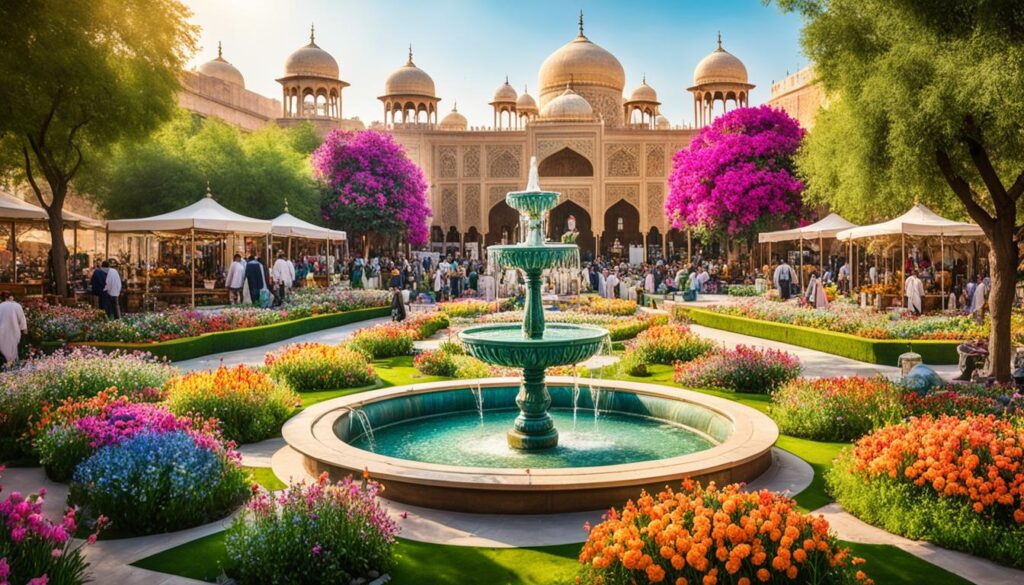
“In the garden of the heart, the nightingale’s song is the ghazal; in the depths of the soul, the ghazal is the language of love.”
– Mirza Ghalib
The golden age of Urdu ghazals changed literature forever. It inspired many poets and moved readers with its deep human stories.
The Progressive Writers’ Movement
In the early 20th century, Urdu poetry saw a big change. This was the Progressive Writers’ Movement, a time of big change in literature and art. Urdu poets wanted to fight for social justice and freedom. They used their poems to talk about class, gender, and identity.
Socio-political Awakening through Poetry
Poets like Faiz Ahmed Faiz, Sahir Ludhianvi, and Habib Jalib led this movement. They saw poetry as a way to speak out against social and political issues. Their poems were powerful, showing the struggles and hopes of the people.
This movement changed Urdu poetry forever. Poets mixed art with a call for change. Their poems inspired many to think about big issues and to act.
“Poetry is not a luxury. It is a vital necessity of our existence. It forms the quality of the light within which we predicate our hopes and dreams toward survival and change, first made into language, then into idea, then into more tangible action.” – Audre Lorde
The impact of the progressive writers’ movement still shows in Urdu poetry today. The poetry of resistance is still a strong way to push for change.
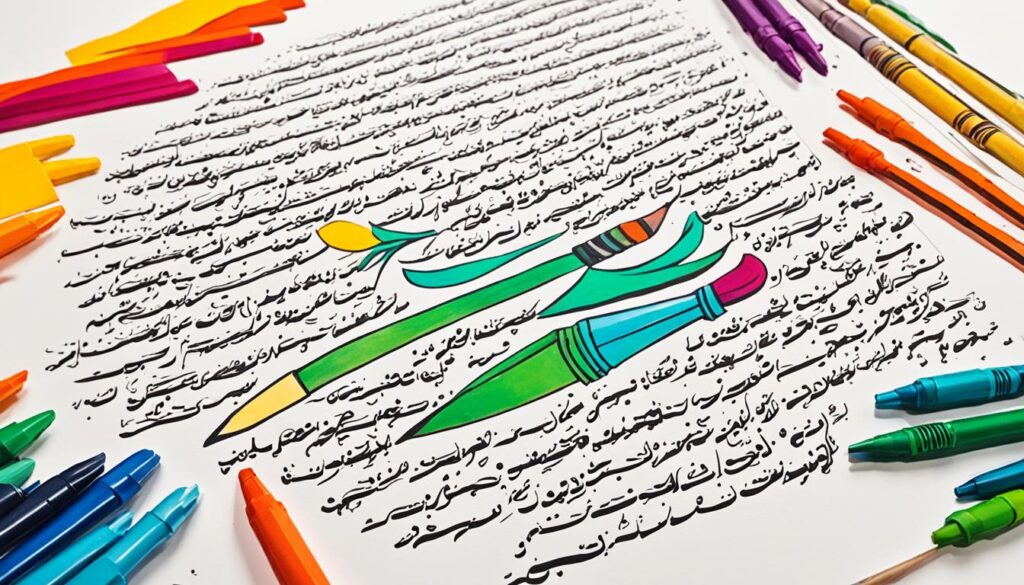
role of urdu poets in urdu poetry history
Urdu poets have been key in making Urdu poetry rich and varied. They’ve shown the social, cultural, and political life of their time through their work. Their poems have touched people across many generations.
These poets have kept the traditional forms like the ghazal and the qasida alive. They’ve mixed old techniques with new themes, making Urdu poetry stay relevant. Their skill with language and rhythm has made poetry more beautiful, inspiring many to write poetry too.
Urdu poets have also used their poetry to talk about big issues like justice and equality. They’ve given voice to those who are less heard, using their words to make a difference. Their poems have become calls to action for those fighting for change.
Urdu poets have also helped build a strong literary culture. They’ve taken part in mushairas (poetic gatherings) and guided new poets. This has helped grow many creative talents over the years.
In short, Urdu poets have deeply influenced Urdu poetry’s history. They’ve kept traditions alive and used their words to bring about change. Their work has deeply touched the Urdu-speaking world.
“The poetry of the Urdu language is a testament to the power of words to transcend boundaries, inspire change, and capture the essence of the human experience.”

Revolutionary Poetry and the Struggle for Freedom
Urdu poetry has been a strong way to speak out against oppression and fight for freedom. At key times in history, Urdu poets stood up for social and political change. They used their words to motivate and unite people.
Poetic Voices of Resistance
Faiz Ahmed Faiz is a famous poet and activist known for his role in Pakistan’s fight for freedom. His poems, filled with revolutionary poetry and the struggle for freedom, spoke to many people. They became calls to action for those who felt trapped.
Habib Jalib was another key figure in revolutionary poetry. He was deeply committed to fighting for social justice and human rights. His poems, bold and honest, spoke out against the powerful and supported the rights of the people.
| Poet | Contribution | Notable Works |
|---|---|---|
| Faiz Ahmed Faiz | Pioneered the poetry of resistance during Pakistan’s independence movement | “Hum Dekhenge,” “Mujhse Pehli Si Mohabbat” |
| Habib Jalib | Fearlessly challenged authoritarian regimes through his revolutionary poetry | “Dastoor,” “Khizr-e-Rah” |
The impact of these Urdu poets on the struggle for freedom is huge. Their poetry reached many people, inspiring them to work for change. They helped bring about important social and political shifts, touching the lives of many.
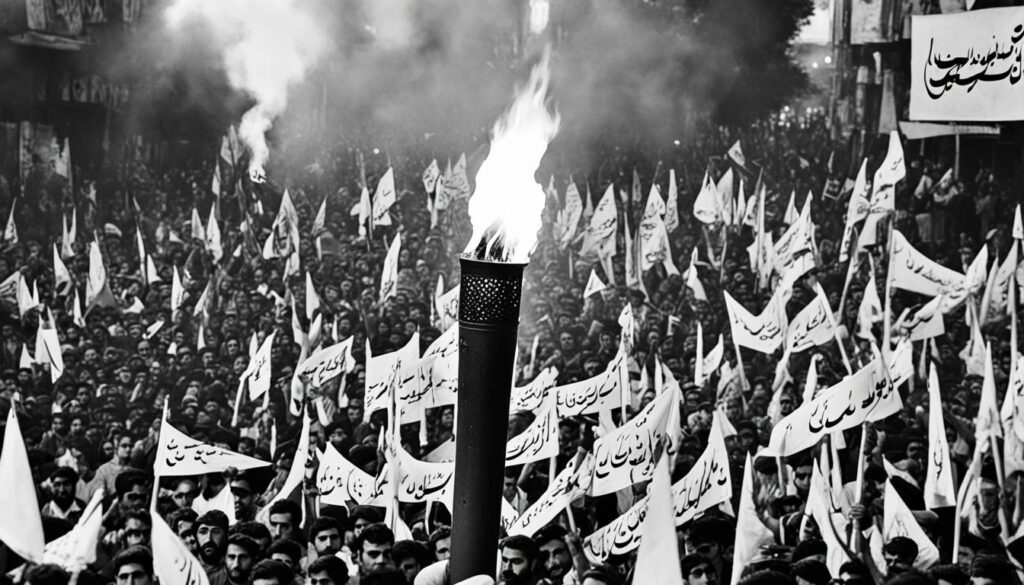
Feminist Poetry and the Empowerment of Women
Urdu poetry has been a strong voice for feminist poets. They challenge the old ways and share women’s stories. These poets talk about gender, sexuality, and women’s lives in Urdu-speaking areas. They have changed literature forever.
Fehmida Riaz is a famous feminist poet in Urdu. Her poems are honest and show women’s power. “Tum Hilay Dil Ke” is a poem that shows women standing up against society.
“Tum hilay dil ke, tum hilay dil ke,
Tum hilay dil ke, hum hi hilain ge.”
(You shook the heart, you shook the heart,
You shook the heart, we will also shake.)
Kishwar Naheed is another important poet. Her poems call for women’s rights and challenge old beliefs. “Hum Gunahgaar Aurtain” (“We Sinful Women”) is a key poem for the women’s movement in Urdu.
| Feminist Urdu Poets | Notable Works |
|---|---|
| Fehmida Riaz | “Tum Hilay Dil Ke” |
| Kishwar Naheed | “Hum Gunahgaar Aurtain” |
| Fahmida Riaz | “Mera Saya” |
| Sahira Kazmi | “Aurat” |
These poets have opened doors for new Urdu writers. They explore gender and identity in their work. Their poetry empowers women, sharing their stories and experiences.
The Mushaira Culture
The mushaira culture is key to keeping Urdu literary traditions alive. These events are where Urdu poets share their poems and talk about them. They help new poets grow and keep the tradition going.
Poetic Gatherings and Literary Traditions
Mushairas have been important in Urdu culture for a long time. They’re where poets, poetry lovers, and experts come together to celebrate poetry. Poets share their poems, sometimes making them up on the spot, showing off their Urdu skills.
These events keep Urdu’s literary traditions alive. They also help the language and poetry grow. Mushairas introduce new styles and themes. They let poets try new things and talk about important issues in their poems.
- Mushairas have been a significant part of Urdu literary culture for centuries.
- These poetic gatherings bring together poets, enthusiasts, and connoisseurs to celebrate the art of Urdu poetry.
- Poets recite their compositions, engage in poetic dialogues, and showcase their mastery of the Urdu language and poetic devices.
- Mushairas have played a crucial role in preserving and promoting Urdu literary traditions, facilitating the evolution of the language and the exploration of new poetic styles and themes.
“The mushaira is not just a poetic gathering, but a reflection of the rich cultural heritage and the enduring spirit of Urdu poetry.”
The mushaira culture is still a big part of Urdu literature. It lets poets share their work, connect with people, and add to Urdu poetry’s legacy.
Poetic Forms and Styles in Urdu Poetry
Urdu poetry is known for its amazing variety, covering many poetic forms and styles over the years. It ranges from the classic beauty of the ghazal to new and bold styles. This shows Urdu poetry’s ability to change and grow, mirroring the culture and knowledge of Urdu speakers.
Exploring the Versatility of Urdu Verse
The ghazal is at the core of Urdu poetry, charming people for many years. Famous poets like Mirza Ghalib, Mir Taqi Mir, and Faiz Ahmed Faiz mastered this form. They made the ghazal rich with feelings and deep thoughts, still moving readers and scholars today.
Urdu poetry also has many other forms, each with its own style and stories. The qasida praises with its special structure, the ruba’i shares deep thoughts in short quatrains, and the nazm lets poets explore big themes. These forms show how Urdu poetry can change and grow.
Today, Urdu poets are breaking new ground, trying out free verse, prose poetry, and other new styles. This mix of old and new keeps Urdu poetry alive and exciting, drawing in readers everywhere.
FAQ
What is the role of Urdu poets in shaping the history of Urdu poetry?
Urdu poets have been key in making Urdu poetry rich and varied. They’ve shaped many poetic styles, themes, and movements. This includes everything from the traditional ghazal to modern progressive poetry.
What are the origins of classical Urdu poetry?
Classical Urdu poetry started with a big influence from Persian poetry and thrived during the Mughal era. Urdu poets mixed Persian beauty with Indian culture. This created a unique and elegant poetry style.
What was the golden age of Urdu ghazal poetry?
The golden age of Urdu ghazal poetry was marked by famous poets like Mirza Ghalib, Mir Taqi Mir, and Faiz Ahmed Faiz. They wrote about love, mysticism, and the human condition. Their work is still celebrated today.
How did Urdu poets contribute to the Progressive Writers’ Movement?
Urdu poets were vital in the Progressive Writers’ Movement. They used poetry to talk about class, gender, and identity. Their poetry helped wake people up to social and political issues.
What was the role of Urdu poets in the struggle for freedom?
Urdu poets were strong voices against oppression during the fight for freedom and justice. Their poetry was a call to action, challenging the old ways. It showed the power of art in bringing about change.
How have Urdu women poets contributed to the empowerment of women?
Urdu women poets have fought against gender bias through their poetry. They’ve talked about gender, sexuality, and women’s experiences. Their work has helped give women a stronger voice in Urdu culture.
What is the significance of the Mushaira culture in Urdu poetry?
Mushaira culture is important for Urdu poetry. It’s where poets meet to share and discuss their work. These events have helped keep Urdu poetry alive and have supported new poets.
What are the diverse poetic forms and styles in Urdu poetry?
Urdu poetry has many forms and styles, from the classic ghazal to new and bold styles. This variety shows the rich and evolving nature of Urdu poetry.
Also visit: https://poetrypk.com/contribution-of-sad-love-poetry-in-urdu-poetry/
Written & Publish by Arslan

